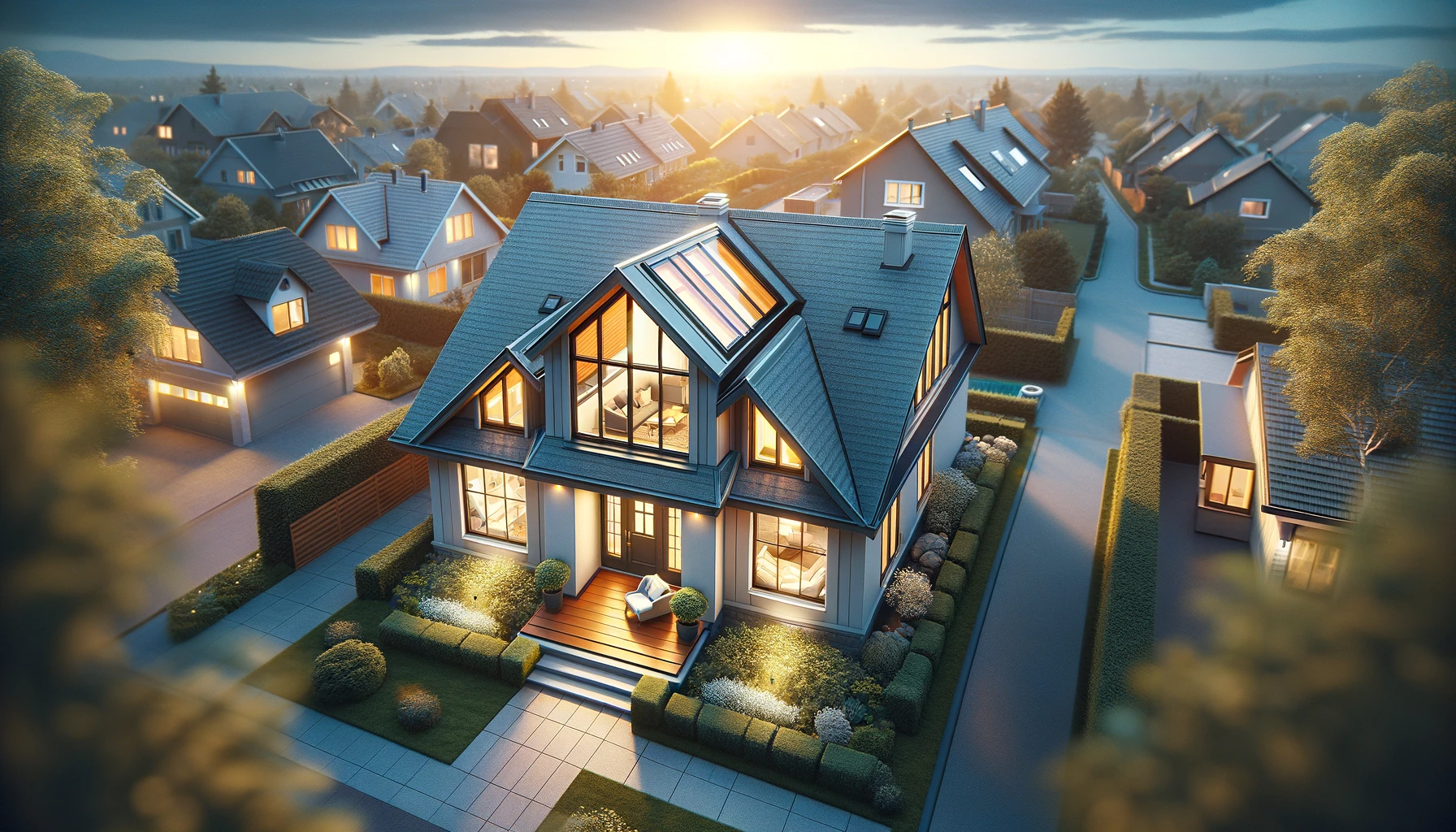Skylight Installation in Residential Roofing

Skylights, popular for bringing natural light and ventilation to homes, require careful planning and expert installation for seamless integration with the existing roof. This article explores key considerations and best practices for residential skylight installation, covering location, materials, and the importance of professional expertise. Whether you’re considering adding skylights or are a roofing professional seeking to expand your knowledge, this article offers valuable insights
Selecting the Right Skylight for Your Home
Choosing the right skylight for your residential roof requires careful consideration. Several factors are crucial, starting with the type: fixed, vented, tubular, or custom, each offering unique benefits. Matching your needs and preferences is key.
Beyond type, size and placement matter. Size impacts natural light and aesthetics, while placement is crucial for optimal lighting and energy efficiency. Consult a professional roofing contractor to determine the best fit for your home’s layout and structure. Remember, careful planning ensures the best results.
Assessing the Structural Integrity of Your Roof
Before installing a skylight, ensure your roof’s structural integrity can handle the extra weight and installation process. Consider these key factors:
Protect your home and family with reliable Roof services. Get a free quote and the peace of mind you deserve.
- Roof Material: Different materials have varying weight limits. Verify if yours can support a skylight.
- Roof Framing: Inspect the framing for any damage or wear that might affect support.
- Roof Pitch: The pitch impacts water drainage and support. Consider it when assessing the roof’s suitability.
Consulting a professional roofing contractor offers valuable insights into your roof’s health and any reinforcements needed for safe skylight installation.
Understanding the Installation Process
Before installing a skylight, ensure your roof’s structural integrity can handle the extra weight and installation process. Consider these key factors:
- Roof Material: Different materials have varying weight limits. Verify if yours can support a skylight.
- Roof Framing: Inspect the framing for any damage or wear that might affect support.
- Roof Pitch: The pitch impacts water drainage and support. Consider it when assessing the roof’s suitability.
Consulting a professional roofing contractor offers valuable insights into your roof’s health and any reinforcements needed for safe skylight installation.
Considering Energy Efficiency and Insulation
Skylights in residential roofs offer natural light and ventilation, but impact energy efficiency too. Careful installation and insulation are crucial to minimize winter heat loss and summer heat gain.
Key factors for energy-efficient skylights:
- Low-E glazing: Reduces heat transfer while allowing natural light.
- Insulation: Around the shaft and curb prevents air leaks and improves efficiency.
- Orientation: Consider shading to minimize unwanted heat gain.
By focusing on these aspects during installation, homeowners can enjoy the benefits of skylights without sacrificing energy savings
Choosing the Best Placement for Skylights
hoosing the right placement for skylights is crucial to maximize natural light and energy efficiency in your home. Here’s how:
1. Consider Roof Orientation:
- South-facing: Enjoy the most direct sunlight.
- North-facing: Receive diffused light ideal for softer spaces.
- East & West: Expect changing light patterns throughout the day.
2. Evaluate Room Layout:
- Target dark areas like hallways, bathrooms, or closets.
- Enhance living areas and kitchens for a bright, airy feel.
By thoughtfully placing skylights based on these factors, you can illuminate your home and improve its ambiance.
| Orientation of Roof | Recommended Skylight Placement |
| South-facing | Strategically place skylights to maximize direct sunlight |
| North-facing | Install skylights to capture diffused light throughout the day |
| East or west-facing | Consider the changing lighting patterns and position skylights accordingly |
Ensuring Proper Waterproofing and Sealing
Installing skylights without proper waterproofing risks leaks and water damage. To ensure peace of mind, prioritize high-quality sealants and flashing designed to endure harsh weather and provide long-lasting protection.
Key components for a watertight skylight:
- Flashing: Creates a barrier between skylight and roof, preventing water infiltration.
- Waterproof membrane: Adds an extra layer of protection against moisture.
By implementing these measures, you can enjoy the benefits of skylights without the worry of potential leaks.
| Proper Waterproofing | Ensure skylights are properly sealed to prevent water damage |
| High-Quality Materials | Use top-grade sealants and flashing for long-lasting protection |
| Flashing Installation | Properly install flashing around the skylight perimeter for a watertight seal |
Maintenance and Care of Skylights in Residential Roofing
Maintaining the Beauty and Functionality of Your Skylights
Regular care ensures your skylights in residential roofing function properly and remain beautiful. It also extends their lifespan and saves you money on future repairs. Follow these essential tips:
Cleaning: Regularly clean the glass with mild detergent, water, and a soft cloth. Avoid abrasives.
Seals and Flashing: Inspect seals and flashing for wear, damage, or leaks. Contact a professional for repairs.
Branches: Trim nearby branches to prevent debris damage and accumulation.
Condensation: Check for excess condensation, a sign of potential ventilation issues.
Roofing Materials: Inspect surrounding roofing materials for damage that could affect the skylight. Address promptly.
Professional Inspection: Schedule a yearly inspection by a professional roofer to identify and address any problems early.
Final Thoughts
Skylights offer natural light, ventilation, and energy savings, making them valuable additions to your home. But flawless installation is crucial for optimal performance and longevity.
Partnering with experienced roofing professionals minimizes leak risks and ensures a seamless outcome. Careful planning and detail-oriented execution enhance both the beauty and functionality of your home.
Considering skylights? Consult a reputable roofing contractor to discuss options and guarantee a successful installation.
